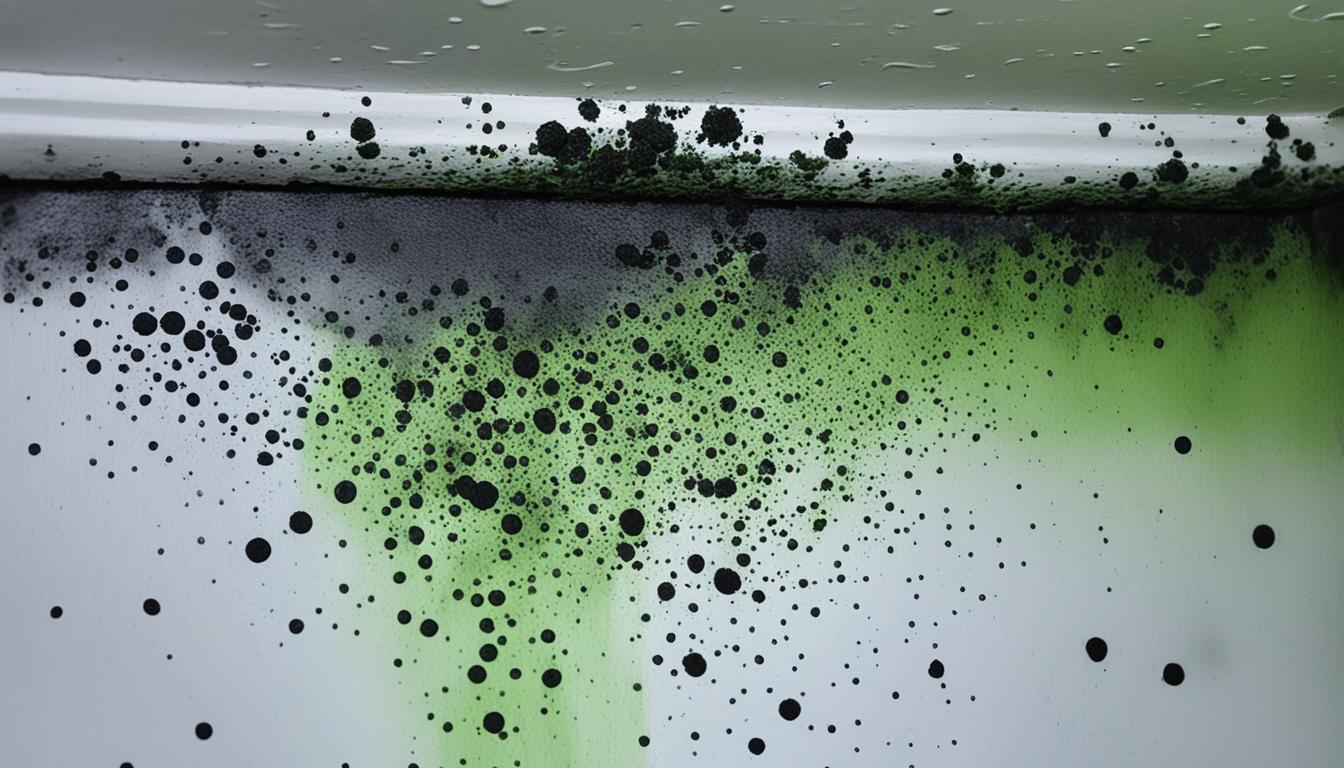
Can Mold Cause Pneumonia? Health Risks Explained
Welcome to our comprehensive guide on the potential link between mold exposure and pneumonia. Mold is a common issue in many households and can have serious health implications if left unchecked. In this section, we will explore the health risks associated with mold exposure and provide a detailed analysis of the topic.
Mold exposure occurs when individuals come into contact with mold spores present in the air or on surfaces. These spores can easily be inhaled, leading to potential health complications. While everyone’s immune response differs, prolonged exposure to mold has been associated with an increased risk of developing respiratory conditions, including pneumonia.
Pneumonia is a respiratory infection that affects the lungs, causing inflammation and fluid buildup. When mold spores are inhaled, they can trigger an immune response, leading to respiratory distress and potentially increasing the likelihood of pneumonia.
It is important to note that not all types of mold are equally harmful. Certain species, such as Stachybotrys chartarum (commonly known as black mold), have been linked to more severe health issues. However, any prolonged exposure to mold, regardless of the species, can pose health risks.
Key Takeaways:
- Mold exposure can increase the risk of developing pneumonia.
- Inhaling mold spores can lead to respiratory distress and inflammation.
- Prolonged exposure to mold, including black mold, can have severe health implications.
- Preventing and addressing mold issues in your environment is crucial for maintaining a healthy living space.
- If you suspect mold in your home, it is important to seek professional assistance for proper assessment and remediation.
Understanding Mold Exposure and Pneumonia Risks
When it comes to mold exposure, understanding the potential risks is crucial. In this section, we will explore the relationship between mold exposure and the risk of developing pneumonia. Mold spores, which are tiny microscopic particles, can enter our respiratory system through inhalation. Once inside our lungs, these mold spores can cause a variety of health issues, including pneumonia.
Pneumonia is a serious respiratory infection that can be caused by various factors, including exposure to mold. When mold spores are inhaled, they can trigger an immune response in the lungs, leading to inflammation and infection. Individuals with weakened immune systems, such as the elderly or those with pre-existing respiratory conditions, are particularly susceptible to developing pneumonia as a result of mold exposure.
The specific dangers posed by mold in relation to pneumonia risks can vary depending on the type and quantity of mold present, as well as individual susceptibility. Some molds produce toxic substances called mycotoxins, which can further exacerbate respiratory symptoms and increase the risk of pneumonia.
To better understand the factors that can increase the likelihood of developing pneumonia as a result of mold exposure, let’s take a closer look:
Factors Contributing to Pneumonia Risks from Mold Exposure
- Duration and intensity of exposure: Prolonged and continuous exposure to mold can significantly increase the risk of pneumonia. Individuals who live or work in damp or mold-infested environments are at a higher risk.
- Individual susceptibility: Some individuals may be more sensitive to mold spores and have a higher risk of developing pneumonia. This includes individuals with weakened immune systems, respiratory conditions, allergies, or asthma.
- Mold species: Certain species of mold, such as Stachybotrys chartarum (black mold), are more toxic and can pose a greater risk of pneumonia when inhaled.
- Environmental conditions: High humidity levels, poor ventilation, and inadequate temperature control can create an ideal environment for mold growth, increasing the risk of exposure and subsequent pneumonia.
In order to effectively minimize the risk of developing pneumonia from mold exposure, it is crucial to address any existing mold problems and implement preventive measures to prevent future growth. This can include proper ventilation, moisture control, regular cleaning and maintenance, and prompt remediation of any moisture or mold issues.
Awareness and education about mold exposure and its potential health risks are key in ensuring a safe and healthy living environment. Let’s move on to the next section, where we will discuss practical steps you can take to protect your health and prevent mold-related pneumonia risks.

Mold Exposure and Pneumonia Risks in Different Environments
Protecting Your Health: Prevention and Remediation
To protect your health from mold-related pneumonia risks, it is crucial to take preventive measures and address existing mold issues promptly. By adopting these strategies, you can create a healthier living environment for yourself and your loved ones.
Preventive Measures
Minimizing mold growth in your environment starts with practicing good moisture control. Here are some tips:
- Keep the humidity levels in your home below 50% by using dehumidifiers or air conditioners.
- Regularly inspect and fix any leaks or water damage in pipes, roofs, or windows.
- Ensure proper ventilation in areas prone to moisture buildup, such as bathrooms, kitchens, and basements.
- Use mold-resistant paints and materials when renovating or remodeling your home.
- Keep your living space clean and clutter-free to reduce the potential for mold growth.
In addition to these preventive measures, it is essential to maintain good indoor air quality. Regularly clean and dust your home, as mold spores can settle on surfaces. Consider using air purifiers with HEPA filters to remove airborne contaminants.
Remediation Steps
If you discover mold growth in your home, it is crucial to take immediate action to remediate the issue. Here’s what you can do:
- Identify and fix the source of moisture or water intrusion causing the mold growth.
- Isolate the affected area to prevent further contamination.
- Wear protective gear, including gloves, goggles, and a respirator, to avoid exposure to mold spores.
- Clean the mold-infested surfaces using a mixture of water and detergent or a specialized mold cleaner.
- Dispose of any porous materials that cannot be effectively cleaned, such as carpeting or upholstery.
- Dry the area thoroughly and monitor for any signs of recurring mold growth.
For extensive mold infestations or if you’re unsure about the severity of the issue, it is highly recommended to seek professional assistance. A reputable mold assessment and remediation service, like Fix Mold Miami, can provide expert guidance and ensure the thorough remediation of mold in your home or business.

| Preventive Measures | Remediation Steps |
|---|---|
| Keep humidity levels below 50%. | Identify and fix the source of moisture. |
| Regularly inspect and fix leaks or water damage. | Isolate the affected area. |
| Ensure proper ventilation. | Wear protective gear. |
| Use mold-resistant paints and materials. | Clean mold-infested surfaces. |
| Keep the living space clean and clutter-free. | Dispose of unsalvageable materials. |
By following these preventive measures and remediation steps, you can actively protect your health and create a mold-free environment in your home. Remember, early intervention and professional assistance are key to effectively addressing mold issues and reducing the risk of mold-related pneumonia.
Conclusion
In conclusion, mold exposure has been identified as a potential risk factor for developing pneumonia. The presence of mold spores in the air can adversely affect our respiratory system and increase the likelihood of respiratory infections. However, it is important to note that not everyone exposed to mold will develop pneumonia, as individual susceptibility varies.
To safeguard your health and that of your loved ones, proactive measures should be taken. Firstly, it is crucial to identify and address any existing mold issues in your environment through professional mold assessments and remediation services. By removing the source of mold growth, you can significantly reduce the risk of pneumonia.
Additionally, implementing preventive measures is key to creating a healthy and mold-free living environment. This includes maintaining good ventilation, controlling humidity levels, promptly repairing any water damage or leaks, and regularly cleaning and drying areas prone to moisture buildup. Taking these steps can mitigate the risk of mold growth and subsequent respiratory infections.
Remember, the health and well-being of you and your loved ones should always be a top priority. By understanding the risks associated with mold exposure, implementing preventive measures, and seeking professional assistance when needed, you can reduce the chances of mold-related pneumonia and promote a healthier living environment for everyone.




